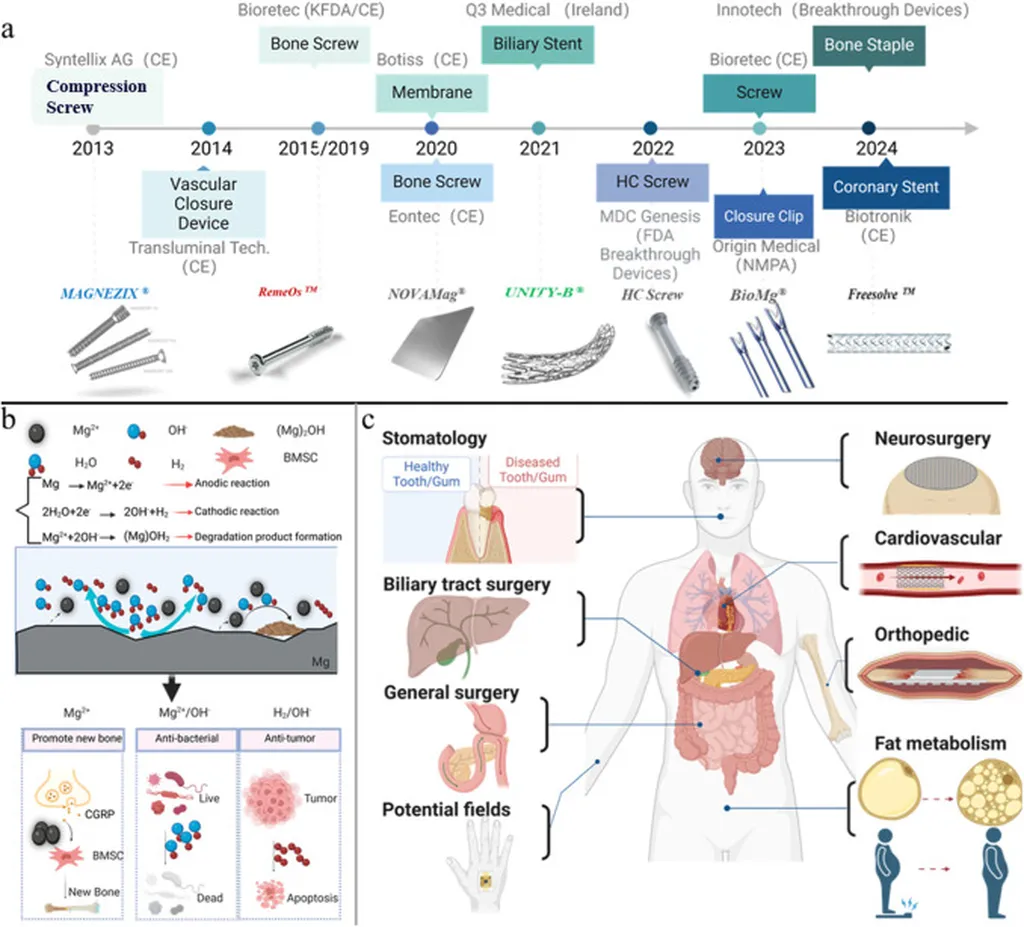In the quest to develop safer and more effective orthopedic implants, researchers have turned to magnesium alloys, lauded for their biodegradability and biocompatibility. However, the rapid degradation of these alloys has posed a significant challenge. A recent study, led by Adedotun Adetunla from the Department of Mechanical Engineering Science, has made strides in addressing this issue, potentially revolutionizing the field of biodegradable implants.
The study, published in *Advances in Materials Science and Engineering* (which translates to “Advances in Materials Science and Engineering” in English), focuses on fabricating magnesium composites reinforced with calcium carbonate (CaCO3) powder using a technique called friction stir processing (FSP). This method involves stirring material to achieve a very fine microstructure. Three different conditions were tested: one-pass reinforced (Sample A), three-pass reinforced (Sample B), and three-pass unreinforced (Sample C).
The results were promising. Sample B, which underwent three passes of FSP with reinforcement, exhibited superior tensile strength (306.13 MPa) and the highest impact strength (0.1352 J/mm²). “The enhanced mechanical properties of Sample B suggest that multiple passes of FSP with reinforcement can significantly improve the performance of magnesium alloys,” Adetunla noted.
However, the study also revealed a trade-off. While Sample B showed improved strength, its hardness decreased relative to Sample C, which was unreinforced but also underwent three passes of FSP. This finding highlights the complex nature of material science, where improvements in one area can come at the cost of another.
One of the most significant aspects of the study was the assessment of degradation rates in blood and plasma media. The researchers found that the degradation rates were relatively consistent across both media, with Sample B showing a slightly slower degradation rate in plasma. This consistency is crucial for predicting the long-term behavior of implants in the human body.
To further enhance the predictive capabilities of their findings, the researchers employed machine learning models—Linear Regression and Lasso Regression—to forecast long-term degradability. Linear Regression achieved a lower prediction error, forecasting that a 71.5-gram implant would fully degrade in approximately 2190 days, or about six years. “This predictive model could help plan maintenance and ensure implant safety, potentially reducing the need for second surgeries,” Adetunla explained.
The integration of experimental data with machine learning models represents a significant advancement in the field. This approach not only provides a more accurate prediction of implant lifespan but also supports the optimized design of biodegradable implants. As Adetunla put it, “This framework could pave the way for more personalized and effective orthopedic treatments.”
The implications of this research extend beyond the medical field. The techniques and insights gained from this study could also have applications in other industries, such as the energy sector, where the development of biodegradable and high-strength materials is of growing interest. For instance, in the design of temporary structures or components that need to degrade over time without harming the environment.
In conclusion, the study by Adetunla and his team represents a significant step forward in the development of biodegradable orthopedic implants. By combining advanced fabrication techniques with machine learning, the researchers have created a robust framework for predicting and optimizing the performance of these implants. As the field continues to evolve, this integrated approach could become a standard practice, benefiting patients and advancing the broader goals of sustainable and innovative material design.

